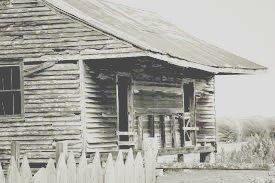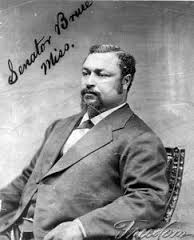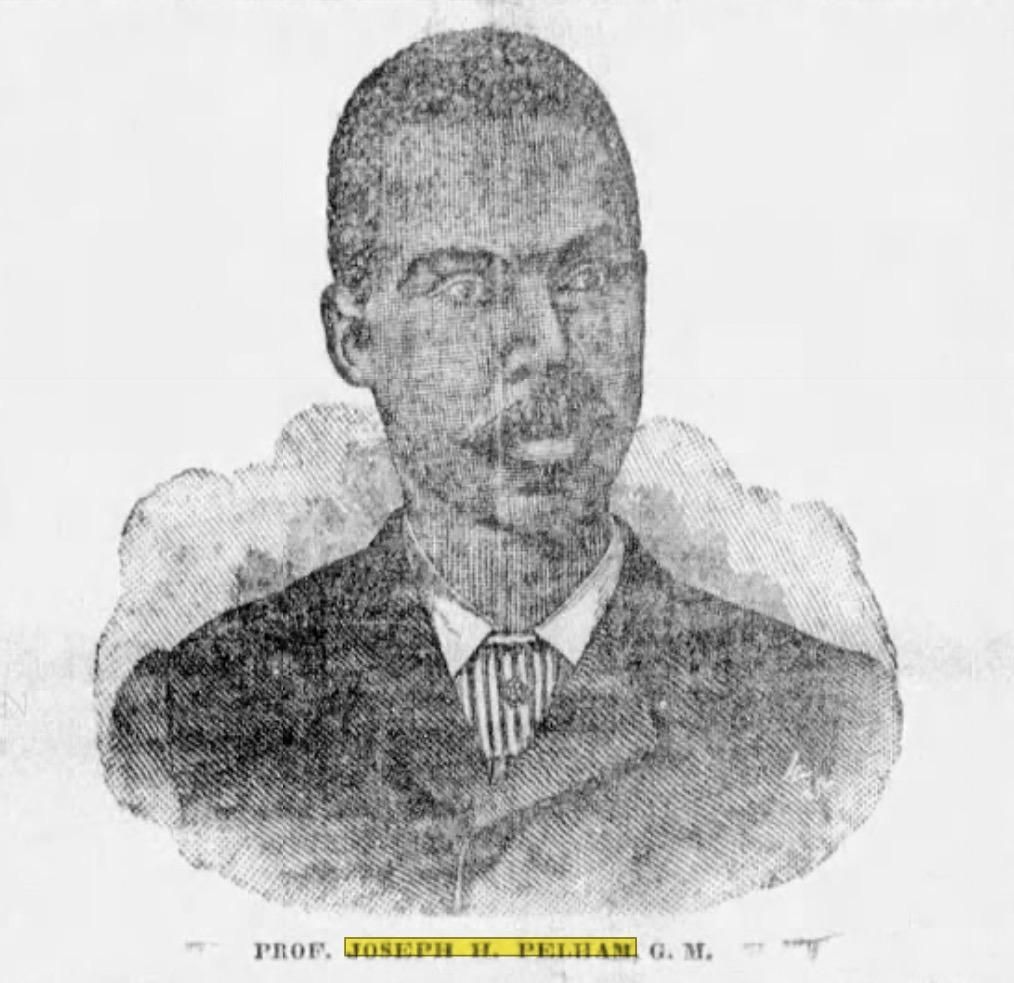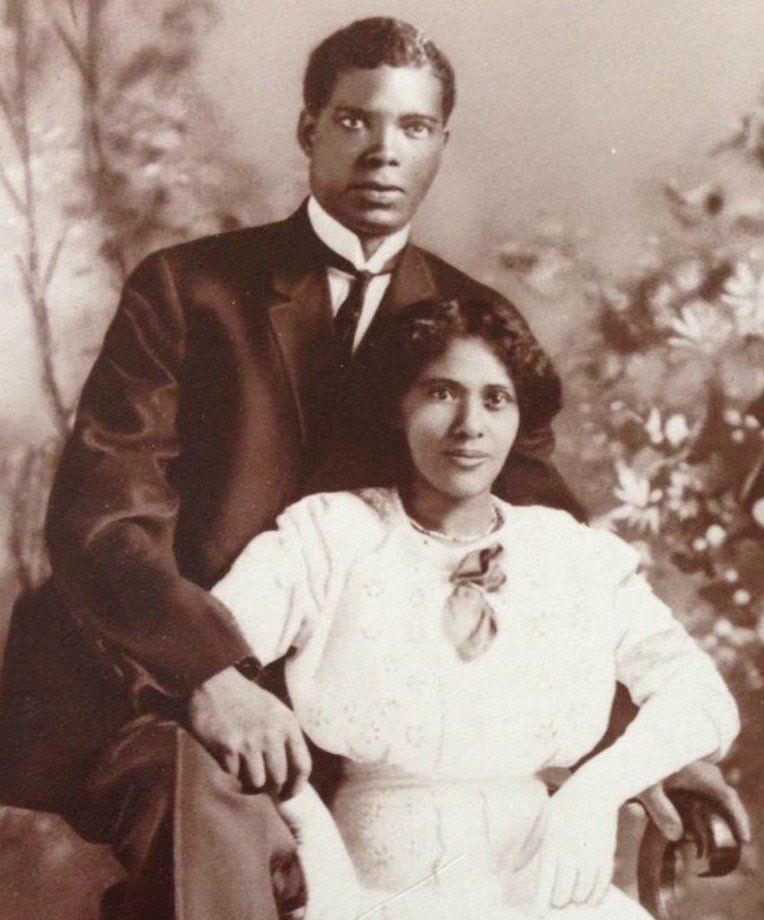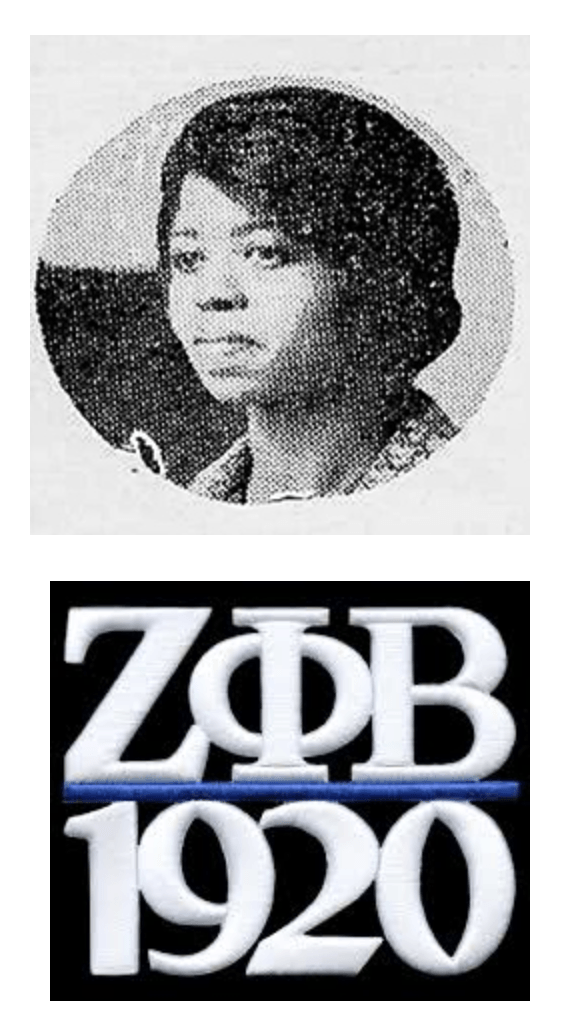Hannibal's African American Notables
Breaking Barriers
Our Notables display highlights just a fraction of Hannibal's outstanding African American citizens who impacted the community and played a key role in making Hannibal a better place to live and raise a family. These are ordinary folks who did extraordinary things.
Here are some of the stories of former slaves and children of slaves who gained national recognition, such as George Coleman Poage, our first Black to medal in the U.S. Olympics; Lena Mason, accomplished poet and evangelist; Arizona Cleaver Stemmons, Founder of Zeta Phi Beta Sorority, Inc.; and Father Augustine Tolton, the first African American priest--to name a few.
There are also photos of generations of Hannibal's black children who attended segregated Douglass School and received the skills to make their way in a white-run world that refused to invest in their future and had such low expectations of them. The medals, honors, and clippings showing their achievements line the walls and fill up the display cases. Many students and descendants of students who attended Douglass School became dedicated teachers, doctors, dentists, and lawyers; talented musicians and athletes; successful business professionals; and committed public servants-such as Joe Miller, who would serve as a member of the Hannibal Board of Education; Hiawatha Crow, a member of Hannibal's City Council; George Hannibal Wright, editor and publisher of Hannibal's longest-running Negro newspaper; and Joseph Pelham, first Negro Hannibal Public Schools Administrator.
WE HOPE OTHERS WILL BE INSPIRED BY THEIR LEADERSHIP, ACHIEVEMENTS, AND DEDICATION TO THE INDEPENDENCE AND EQUALITY OF ALL.
Joseph Douglas, 1822-1923
A hard-working and enterprising man. Not "Injun Joe."
Despite his denials, Joseph Douglas's mixed African and Native American heritage led some Twain enthusiasts to speculate that Douglas served as the inspiration for Injun Joe in The Adventures of Tom Sawyer. For years the city of Hannibal has perpetuated this myth. Here Joseph Douglas is celebrated as an honest man, a business leader, and a pillar of the community. By saving his meager earnings as a roustabout, Douglas acquired land, a valley between Cruikshank Mansion and Paris Ave (the cheapest and least desirable) and sold it to former slaves. In doing so, he created one of the oldest communities of African American property owners in the nation.
TYPICAL DOUGLASVILLE HOME
Named Douglasville in his honor, it included about eighty families, as well as Hannibal's oldest African American church and schools. Over the ensuing decades, the neighborhood became the center of the Black community, home to some of the most prominent African American business owners and citizens in Hannibal. By 1927, Marion County had more than 4,000 African American inhabitants, 65% of whom owned or were buying homes.
In the more than seventy years he lived in Hannibal, he married twice and raised a step-son. His death certificate indicates that Douglas lived to be 102 years old
Blanche Kelso Bruce, 1841-1898
Educator, Politician, Freedom Fighter
Born in 1841 on the Virginia plantation of his owner and father Pettis Perkinson and his house slave, Polly Bruce, Blanche Kelso Bruce was one of eleven children. Despite laws forbidding it, Perkinson educated the Bruce children, including an older half-brother, Henry C. Bruce (author of 29 Years a Slave). Years later, Perkinson settled with his slaves in Missouri.
After the Civil War, Kelso Bruce settled here in Hannibal. Here he replaced a Reverend Henderson to teach former slaves in the first African American school, established in the rear of the Baptist church in 1853. After a few years, he left Hannibal to further his academic training. Even though Kelso left the 1881 City Directory lists John Bruce as a colored resident. A Luda Bruce is an 1880 graduate of Douglass School and is discovered teaching alongside Joseph Pelham at Douglasville school.
Bruce was elected as a Republican to the Senate in 1874, he has the distinction of being the only former slave and first African American senator in the state of Mississippi to preside over the national Senate, which he did on February 14, 1879. In 1881, President Garfield appointed Bruce as the first African American Register of the Treasury, which also made him the first African American with a signature on U.S. paper currency. In 1897, President McKinley reappointed Bruce as Register of the Treasury, where he served until his death in 1898.
Blanche Kelso Bruce lived a life devoted to the betterment of his race. Bruce's advocacy for African Americans was most evident in issues affecting black Civil War veterans. Notably, he worked to secure Civil War pensions for African American veterans and their heirs. In 1879, he also submitted a Bill to distribute money unclaimed by black Civil War soldiers to five African American colleges. Bruce supported similar equal rights for Chinese workers and Native Americans.
Sources: Henry Clay Bruce: A New Man 29 Years a Slave 29 years a Free Man, 1879. http://docsouth.unc.edu/fpn/bruce/bruce.html, KingMaker Foundation Issue #10 Fall 2008
Joseph Pelham, 1848-1915
Businessman and Community Leader; Hannibal Public School's First Black Educator
In1847 the Missouri Legislature enacted laws which forbid teaching Blacks to read and write; in 1868 the Missouri Legislature passed a bill that mandated segregation in all Missouri schools. In 1870 Hannibal Public School System built its first white-operated school for Negroes. However, Negro distrust of white teachers led to the 1875 hiring of its first Negro, 26-year old Joseph Pelham, as school principal. He in turn hired Miss Ella Gordon, Meta Pelham, and Miss Jenny Golden (who later became his wife) to teach. He started out in Douglasville School then led the construction of Douglass School and was responsible for Hannibal's Negro education system as its superintendent. Douglass soon became recognized as one of the best in the state, with many systems following their lead. Pelham excelled despite the fact that his schools received far less financial support --buildings were in a constant state of disrepair, fewer and older books, less equipment, and an underpaid staff. Negro students came from surrounding northeast Missouri communities to attend this high school; some boarded and some were bussed as many as 100 miles round trip.
Pelham was also a solid business professional, owning property as well as a real estate office where he helped former slaves become homeowners and offered financial advice. Ultimately Pelham became U.S. Pension Agent where he successfully garnered pensions for local Civil War veterans and widows. Mr. Pelham was very active in various civic and fraternal organizations, he rose to the highest ranks of the Missouri Prince Hall Masons, becoming Grand Master of the Masons representing Missouri for several years.
He retired after 32 years here in Hannibal and returned to Detroit, the home of his childhood and the place where his wife and daughter were buried.
George H. Wright, 1886-1957
Founder and Editor of the Hannibal Register
Born to former slaves, George Wright became a publisher, newspaper editor, printer, civil rights advocate, businessman, community leader, mentor, husband, and father who devoted his life to his family (11 children) and to Hannibal's African American community. His was the first generation of free people; George and his four siblings--Annie, William, Russell and George--all attended our segregated Douglass School and began the legacy of education and accomplishment. As a newly freed people, they were obsessed with education.
In pursuit of better employment opportunities Wright migrated to Ann Arbor, Michigan; here he met and married Rose Trott, and began his career in publishing with the University of Michigan print shop.
In 1919 George returned to Hannibal and, armed with new skills, opened a print shop and began publishing The Hannibal Register a newspaper for the growing African American community. He owned and operated Hannibal's longest running African American newspaper, from 1919 until 1941. George amassed a large advertising clientele, including 40% of Hannibal's white store keepers and business owners. He located his business at The Wedge, raised his eleven children in Douglasville, assumed a leadership role in the NAACP, and was overall a solid addition to Hannibal's thriving post-slavery Negro community, often campaigning on behalf of African Americans in his editorial column.
Having two sons in World War II, Mr. Wright was anxious for a role in the war effort. He recruited schools and community groups to pool their efforts in raising money for war bonds and stamps, he raised thousands causing him to be heralded by the U.S. Treasury Department.
George ran the family-operated business Hannibal Register here for 23 years, prompted by his wife's desire "to go home," they moved back to Michigan in1941. They enjoyed forty years of successful service to this community as he continued to campaign on behalf of African Americans in Detroit. His Michigan descendants continue to be involved in the printing business.
Arizona Leedonia
Cleaver-stemons, 1898-1980
Pioneer, Educator, Community Leader
What a phenomenal woman! Arizona Cleaver was born in Pike County, raised in Hannibal's Douglasville, was educated at Douglasville School, then graduated from Douglass School in 1918. She left Hannibal for Howard University in Washington, D.C. to further her education. It was here where Cleaver, along with Myrtle Tyler Faithful , Viola Tyler Goings, Fannie Pettie Watts, and Pearl Anna Neal, founded Zeta Phi Beta Sorority on January 16, 1920, an organization whose foundation was based on scholarship, service, sisterly love. It was this foundation that motivated Arizona to return to her hometown after graduation; she even returned to her childhood home in Douglasville at 1108 Rock Street. She began her professional career in education at Douglass School. The 1925 Yearbook list Cleaver as the Head of the High School and teacher of French and Commercial Training (business).
She was under the leadership of Martin Lewis, who also attended Howard University. The English teacher, Noreen Slaughter, was also a Howard University graduate and possibly a Zeta. Cleaver left Hannibal for Philadelphia where she met and married James Stemons in 1928. She spent the bulk of her life living and working in Philadelphia, always in the service of other children and adults struggling to survive. Her personal motto was "give the world the best you have."
Arizona Cleaver-Stemons was the first president of the Alpha chapter and the first national president of Zeta Phi Beta Sorority. She completed her graduate and post-graduate studies in the field of social work and was responsible for chartering numerous undergraduate and graduate chapters throughout the United States. The organization has been innovative, chronicling a number of firsts: it was the first National Pan-Hellenic Council organization to centralize its operations in a national headquarters, first to charter a chapter in Africa, first to form auxiliary groups, and first to be constitutionally bound to a fraternity, Phi Beta Sigma Fraternity, Inc. The sorority takes pride in its continued participation in transforming communities through volunteer services from members and its auxiliaries. Zeta Phi Beta has chartered hundreds of chapters worldwide and has a membership of 100,000+.
George Poage
November 6, 1880 - April 11, 1962
The First Black American to Medal in the Olympics

